Coroner Rules Cory Monteith’s Death Due to Heroin and Alcohol Use
According to the U.S. Department of Health & Human Services, heroin addiction is a chronic, relapsing brain disease. With intermittent abstinence, the body loses its resistance to the user’s drug of choice, which makes overdosing more of a probability. Some believe this might have been the case with Glee actor Cory Monteith.
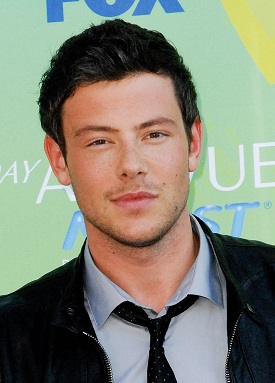
Courtesy of: www.hdwallpapersinn.com
Canadian-born Monteith, 31, was found dead in a Vancouver hotel room in July alongside a hypodermic needle and spoon covered in drug residue and two empty bottles of champagne. He played the hunkish Finn Hudson on the show, a character with a heart of gold.
The coroner’s report found that Monteith succumbed to a mixture of alcohol and intravenous heroin use, with the death ruled accidental. He was alone at the time.
Young Celebrities Who Have Died From Drug Abuse
In recent years, a handful of actors have failed to live out their 30s because of addiction: River Phoenix collapsed outside a popular Hollywood nightclub in the early 1990s after overdosing on a combination of heroin and cocaine; Heath Ledger died a couple of years ago after succumbing to prescription drugs; Corey Haim, a 1980s child star who battled addiction since he was 15, died in 2010 after taking several forms of depressants and an anti-psychotic drug.
Monteith’s Early Drug Use
In Monteith’s case, he came out to the media with his drug problems, saying he began smoking marijuana at 13 and was abusing hard drugs by 16. He admitted to one publication that he felt lucky to be alive after some of the drug-fueled episodes he had gone through.
Every year more than 200,000 heroin addicts are imprisoned. So what can be done to help?
Naltrexone For Reversing Effects Of Heroin Overdose
Naltrexone is a drug that reverses the effects of a heroin overdose, but it’s been shown to be ineffective as an addiction treatment drug. Other drugs used as treatments are more addictive than the heroin addiction they’re supposed to be treating. At present there is no pharmaceutical cure-all for addiction.
Silver Lining – Cory Monteith’s Fan’s Learning Of Drug Abuse’s Dangers
Experts agree that if heroin addiction is perceived and treated as the chronic brain disease that it is, the stigma surrounding the issue will be lessened and more treatment avenues will be established. While Monteith’s case is tragic, it’s possible that his young fans may have learned about the dangers of drug abuse instead of following down his path.
Silk Road, the website that became an Amazon.com for online drug deals, reached its inglorious end. Visitors to Silk Road could buy and sell illegal drugs, illicit prescription drugs, weapons and ammunition or make contact with computer hackers. Ross William Ulbricht, who founded the site under the alias Dread Pirate Roberts, had been pursued by the FBI for two years.
“Silk Road” Website Shut Down – Ross William Ulbricht AKA Dread Pirate Roberts Captured
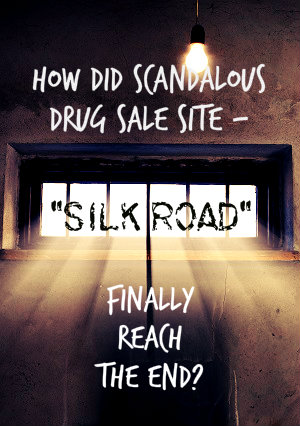 Ulbricht was arrested and the site shut down on October 1. Authorities seized $3.6 million in the virtual money known as bitcoin. Ulbricht, 29, faces a list of felonies including conspiracy to traffic in narcotics, computer hacking, money laundering and solicitation of murder.
Ulbricht was arrested and the site shut down on October 1. Authorities seized $3.6 million in the virtual money known as bitcoin. Ulbricht, 29, faces a list of felonies including conspiracy to traffic in narcotics, computer hacking, money laundering and solicitation of murder.
Silk Road was launched in 2011 and has served as an Internet clearinghouse for drug deals totaling around $1.2 billion. Ulbricht’s personal take home as middleman on those sales was reported to be $80 million.
Dread Pirate Roberts referred to a masked character in the movie and novel The Princess Bride who, it turned out, was not one man but a series of men, allowing the name to be passed on to the previous holder of the title to retire with his riches. Ulbrict is alleged to have sought out contract killers to assassinate people he disagreed with, posted an email address which contained his name in an online forum and alluded to the illegal operation on his personal LinkedIn account. All of which lead to his capture instead of retiring with his millions.
Ulbricht had everything going for him. He graduated from the University of Texas at Dallas, where he was a physics major on a full scholarship. Later he became a graduate research assistant at Penn State University, earning his Master’s Degree in Materials Science and Engineering and writing a thesis with the title “Growth of EuO Thin Films By Molecular Beam Epitaxy.” But after leaving Penn State he shifted his goals from physics to libertarian principles, viewing the Silk Road website’s forum for conducting illegal transactions as a model of economic theory that, according to his LinkedIn account, would “abolish the use of coercion and aggression against mankind.”
Selling Illegal Drugs To Teenagers Secretly Over Internet
The website and its users employed blocking software which protected identities on both ends from discovery by legal authorities. And he used a virtual currency, bitcoins, to pay for it all. The expertise behind the Silk Road and bitcoins may be admirable, but the application of that knowledge has been anything but.
Ulbricht has said that he is interested in peaceful Eastern religion and starting a family. But what Silk Road allowed was a haven for criminal activity, including the sale of illegal drugs to teenagers. The drugs were sold in secret over the Internet and then delivered by the U.S. postal service. Ulbricht tweeted about the irony, a sort of public thumbing of his nose. But authorities got the last laugh.
17 Oct 2013
You May Think It’s Molly, But It May Not Be
Hospitals face a difficult problem whenever someone comes in to be treated for a Molly overdose. The patient may believe they’ve taken a form of ecstasy, but there is no way to know what the person actually swallowed. There is no “Truth in Labeling Law” to govern illegal drugs, and many think they’ve been using Molly when they’ve really been taking some other highly dangerous substance.
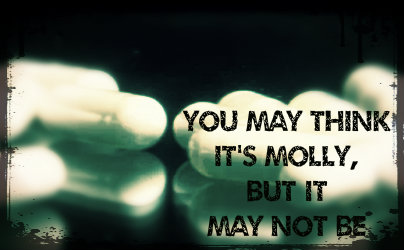
Courtesy of: www.ktsm.com
Molly is the street name for the synthetic drug MDMA. It’s called Molly because of the powder or capsule form that it comes in, as opposed to tabs, and the presumption that the “molecular,” or Molly for short, form is more pure. Synthetic drugs are also sometimes referred to as designer drugs. They are often compounds designed to mimic the effects of traditional drugs like marijuana, LSD or ecstasy, among others. Synthetic marijuana, for example, is sold as K2 or Spice.
Mislabeled And Dangerous Synthetic Designer Drugs
The problem is that you don’t know the person who designed your Molly. The Drug Enforcement Agency regularly tests the drugs it obtains through seizures. Those tests often reveal that pills are mislabeled.
Experts often find methylone in the pills, which is a key component in bath salts, another synthetic drug famous for being unpredictable and causing serious health side effects. In 2012 a man was arrested for importing methylone from China and then selling it to someone as Molly. That person died after using the drug.
Dangerous Side-Effects Of Molly
Molly is a popular drug for young people attending raves, dance clubs and concerts. The drug enhances positive emotions and feelings of bonding with others. However, Molly also increases a person’s heart rate and raises their body temperature, sometimes to extremes. One young man died with a body temperature of 109 after taking Molly. The risks of dehydration are so well known that special booths are often set up at events where Molly is expected to be used.
Symptoms commonly seen in hospitals include agitation, seizures, soaring fever and increased heartbeat. Since there is no way to know for certain what the young person actually ingested, the best hospital staff can do is to manage symptoms while they wait for the effects of the drug to wear off. Hardly reassuring.
Dying After Taking Molly
Over Labor Day weekend 2013 several young people died after taking Molly at various concert venues, with one multi-day concert in New York was shut down due to deaths. Nevertheless, rappers and rock stars continue to sing about the beauties of Molly. And young people continue to swallow whatever they are being told by their idols.
To Read More About Molly’s Dangerous Side-effects On Teens – Click Here
Teenage substance abuse touches every kind of family regardless of race, social level or education. When a teen uses it never affects just themselves – it impacts everyone around them, especially other family members.
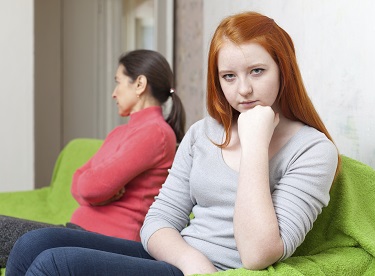 Family relationships become strained as a teen deepens their use of alcohol or drugs. This happens for many reasons. In the midst of substance abuse, teens can become secretive, irritable, depressed, lazy, hard to motivate and sometimes even angry or aggressive. Obviously, close relationships are negatively affected by this kind of personality and behavior change.
Family relationships become strained as a teen deepens their use of alcohol or drugs. This happens for many reasons. In the midst of substance abuse, teens can become secretive, irritable, depressed, lazy, hard to motivate and sometimes even angry or aggressive. Obviously, close relationships are negatively affected by this kind of personality and behavior change.
Family members may become angry themselves or develop avoidant behaviors in order to deal with an unruly teen under the influence. To avoid conflicts or feelings of guilt and rejection, the teen may increasingly isolate himself in his room away from the family, further weakening the familial bond.
Ignoring And Denying Teen Drug Use
Many families begin by ignoring or denying the existence of the problem, telling themselves it’s just a phase, or excusing the behavior because of difficult circumstances in the teen’s life.
Attempts are made to keep the problem secret and hidden from others. Unfortunately while the family is trying to protect the teen from direct consequences or prying eyes and wagging tongues, they are actually enabling the behavior and preventing the teen from getting much-needed help.
Enabling Teen Addicts
It isn’t unusual for family members to want to show love and mercy. When there’s a sob story parents and siblings may give the teen money, which typically goes to fund the habit. In other scenarios the addict doesn’t ask for money, they simply take it. Again, family members sometimes decide not to confront when money is suddenly missing from their purse or wallet.
Teen Substance Abuse On Younger Siblings
One huge impact of teen drug or alcohol abuse is the example it sets for younger siblings. Little brothers or sisters may decide to imitate the behavior. They start hanging out with the teen’s friends who are likely to be users themselves. Conversely, when siblings don’t respect the abuser it can create a rift in what was formerly a close relationship.
Parents get drawn into the fallout of teen substance abuse, blaming themselves or one another for the problem. Besides not resolving the issue it can wind up producing depression in one or both of the parents, compounding the family’s issues. Without a strong support network, parents and siblings can feel isolated, hurt and impotent.
Family Dangers With A Teen On Drugs And How To Intervene
The fact that teens can become violent while they are drunk or high creates an entirely separate risk issue from all of the relational breakdowns. They may become unpleasant to be around, even violent, and they may lie and steal, making everyone in the home feel terrorized.
What families need to do in order to halt the downward cycle of destruction is intervene. For some families this will mean signing the teen up for an outpatient program, for others it may mean placing the teen in a residential treatment center. Since getting at the root issues of substance abuse often takes time, some families opt for therapeutic boarding schools. Whatever the decision, ignoring the problem won’t make it go away and enabling the problem only makes it worse.
Teens that begin using alcohol and other substances during adolescence are engaging in what experts call early initiation, which is a concern because individuals that begin using substances recreationally in high school may go on to develop a dependence by the time they reach adulthood.
There are deterrents in place to prevent teens from using alcohol and cigarettes; including age limits and heavy consequences if a business is caught selling to minors or an individual is caught purchasing for them.
A new study conducted by the Centre for Addiction and Mental Health (CAMH) finds that the majority of teens in Ontario, Canada, obtain these products from friends or family.
The researchers surveyed teens in grades 7 to 12. Among the students that smoked cigarettes, 58 percent report obtaining their last cigarette from a friend or family member. 19 percent of teen smokers said that they bought the cigarettes from a corner store, bar, gas station or grocery store.
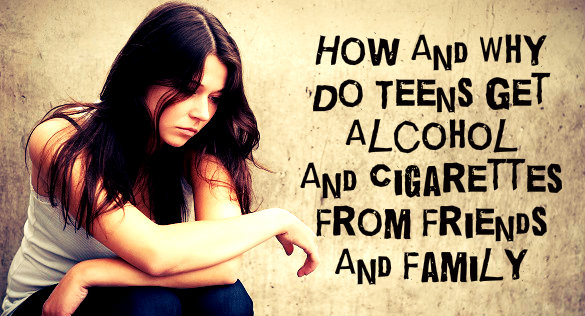
Gender, Age And Neighborhood Differences In Obtaining Cigarettes, Alcohol
Males were more likely to report that they had obtained cigarettes from a store compared with females. Seventy-three percent of the females involved in the survey said that their last cigarette came from a friend or family member.
When students were asked about consuming alcohol, 39 percent of those that drank said that their last drink was given to them, while 28 percent asked someone else to purchase the alcohol for them. Four percent of students said that they purchased the alcohol themselves from a liquor store.
The students from an urban area were more likely than those in rural settings to indicate that someone had provided them with alcohol (40 vs. 35 percent). Among those in rural areas, 33 percent of the students said that they gave someone else money to purchase alcohol for them, while 27 percent of students in urban settings asked someone to buy alcohol for them.
The report also found that there were trends according to the student’s age. Older teens were more likely than their younger counterparts to admit that they obtained alcohol by paying someone to purchase it for them. This occurred at a rate of 32 percent for older teens versus two percent for younger teens. Younger teens were more likely to indicate that someone gave them alcohol at a rate of 53 percent versus 37 percent for older teens.
Parents And Corner Stores Involvement And Responsibility
Principal investigator for the study, Dr. Robert Mann, is also the Senior Scientist at CAMH. Mann explained that teens are often obtaining alcohol and cigarettes from the very people that should be protecting them from exposure to such substances.
The findings also indicated that teens were able to easily access cigarettes from corner stores that don’t sell alcohol. The findings suggest that the availability of alcohol at corner stores could result in increasing rates of teens purchasing alcohol.
The information for the study was derived from the Ontario Student Drug Use and Health Survey by CAMH. The survey was administered to 9,288 students in the 7 through 12 grades at 40 public and Catholic schools in Ontario. The survey has been given to students every two years since 1977.
Parents concerned about their children obtaining alcohol and cigarettes during adolescence can openly discuss these matters with their teens. Studies have shown that by introducing the topic multiple times into conversation teens are much more able to make informed decisions.
Another way to prevent teens from using substances is to talk with other family members about the teens’ substance use. In some cases, the teen is obtaining cigarettes or alcohol from an older sibling.
Already this fall one college campus has been rocked by prescription drug abuse. A cheerleader from the University of Minnesota was arrested in September when she was found in possession of drugs without a prescription. This is but a microcosm of a serious national problem. Young people all across America are buying and sharing powerful prescription medications.
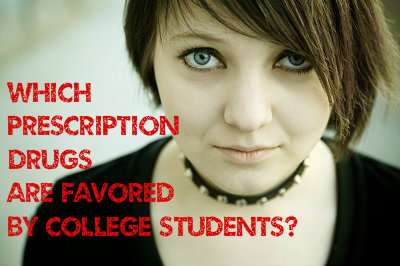 The 18-year-old at the University of Minnesota was seen wandering up and down the halls of her dormitory, seemingly in a drunken state. When officials entered her dorm room they found prescription painkillers but no prescription. They also found an electronic scale and an undisclosed amount of marijuana. She is facing three separate felony charges and potentially five years in prison.
The 18-year-old at the University of Minnesota was seen wandering up and down the halls of her dormitory, seemingly in a drunken state. When officials entered her dorm room they found prescription painkillers but no prescription. They also found an electronic scale and an undisclosed amount of marijuana. She is facing three separate felony charges and potentially five years in prison.
Majority Of College Students Sharing Prescriptions?
But her story is far from unique. One survey reported that 70 percent of college co-eds said they shared prescription medications with one another. A health official told a local news station that that for every one student with a legitimate prescription another five students possess stimulants with no prescription. And the problem is not restricted to college campuses. Another study found that 20 percent of graduating high school students say they have used prescription drugs for non-medical purposes.
One reason prescription drug abuse has escalated has to do with the enormous supply of pills that are floating around where young people can get them. An astounding 210 million prescriptions were written by doctors for painkillers in 2010, and that number has only gotten larger. With that many pills sitting on shelves in homes it’s hard to choke off the supply.
Opiates And Stimulants – Drugs Favored By College Students
The most popularly abused prescription drugs are opiate painkillers derived from the same opium poppy as heroin. When meds become harder to get or start costing too much, kids move on to heroin as it produces similar effects at a fraction of the cost.
Stimulants like Adderall and Ritalin are also popular among young people. These drugs are most often used to treat the symptoms of attention deficit hyperactivity disorder, but healthy kids take them to increase study skills, stay awake for parties and lose weight.
Dangers Of Prescription Drug Abuse
According to the Centers for Disease Control, at least 100 people die each day as a result of prescription drug overdose. The danger is real, though young people seem oblivious. The arrest of a pretty young college cheerleader is just the tip of the iceberg.
My story of addiction and recovery is the story of a near miss and an incredibly lucky break. Therapists talk about resilience and protective factors (as opposed to risk factors)—well, I had a boatload of risk factors but somehow I was able to muster some reserves, survive and ultimately thrive.
My story begins when I woke up from a blackout and realized that I had been raped. I remember drinking the night before, but I don’t remember anything from about halfway through the night until the next morning. The other people at the party helped me piece it together—what they saw and heard plus what I felt and what it all added up to. I was 13 years old and was already drinking myself into blackouts. The boy who raped me said he didn’t remember it either. He was only 14.
Within a year I was raped again, this time by an adult—the father of the child for whom I babysat. He was drunk. He was driving me home from babysitting his infant daughter, and made a wrong turn. I knew what was coming and just braced myself for it. I never told anyone.
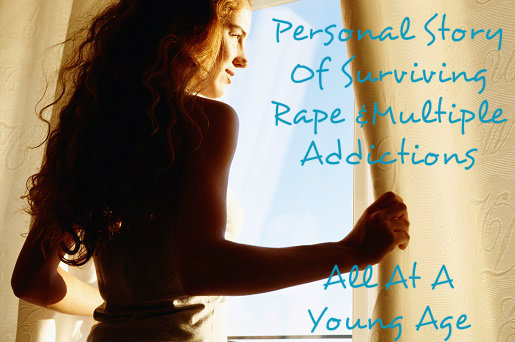
Stopping One Addiction And Dangerously Starting Several Others
I stopped drinking but I didn’t stop trying to drown. I smoked marijuana, ate Quaaludes, black beauties, and pink footballs; I snorted cocaine, and eventually snorted heroin. I dated a dealer, and did anything I was handed, no questions asked. It came to me one day, an epiphany of sorts: I realized that if I continued to live the way I had been living that I would die. I had stopped short of using needles, but snorting coke and heroin wasn’t getting me high anymore. I had to escalate again, or get clean, or face the reality that life as a heroin addict-garbage head was likely going to kill me.
A mental health professional had said to me that women with my history end up either dead or in prostitution. For a 15-year-old, this was a pretty heavy realization. I wanted to talk with my mom about it, but when I asked her to talk with me later that day, she said no. I pressed her, telling her that I needed her to listen to me. “No,” she said, “I can’t listen to you.”
Pain, Molestation And Addiction At A Young Age
So maybe my story doesn’t begin at age 13 in a blackout after all. If by age 15 my mom couldn’t tolerate listening to me, obviously a whole lot more was going on and had been for some time. I started drinking when I was 12. I wasn’t the only seventh-grader who was drinking, but I was likely the only one who was drinking to deal with flashbacks.
Backing up another year, things had happened that I still struggle to name. Rape is too simple and it conjures up the wrong set of images. Incest is too familial and can’t capture the way it feels when it is your teacher. Yes, my teacher, my sixth-grade teacher.
There aren’t words for what he did; there are sentences. He was a pedophile, and he groomed me for months, setting me up to be in a position where I wouldn’t say no and I wouldn’t tell anyone. He betrayed my trust and he took my childhood at age 11. I loved him and he said he loved me. It was truly confounding. It went on for months, my lies to my mom about where I went after school, my first lies ever to anyone.
It was Lolita, so I’m told—a novel that no matter how wonderfully written it may be, I have never been able to read it. At the end of the school year, he disappeared. Eventually I told a friend, and she told my mom. Police were called, school officials informed. I was interviewed, and then interviewed again by a special police “verifier” to determine whether I was making it all up. I wasn’t.
Choosing Life And Healing In Recovery Over A Life Of Pain And Addiction
After spending the next few years trying to not feel anything, and then choosing to live instead of die, recovery was a very long and difficult road. Not drinking or drugging was relatively easy. Figuring out what to do with all those feelings and how to get my needs met in healthy ways was the real recovery. It took years of therapy, and a passionate will to “be better”—to not only stop trying to kill myself, but to actually enjoy living.
For a while, pursuing some sort of healing was a full-time endeavor. I chased healing and recovery, stalked it, pursued it relentlessly. I was vulnerable to healers of every make and model, and spent money I shouldn’t have spent and time I didn’t have seeking healing.
While I learned a ton and all of it was useful at some level, I think the critical moments were back in my teens when I chose—consciously chose—to live and to live well. I had no idea how I would make that happen, but it was adolescent spunk and contrariness that fueled my strength. Mom won’t listen to me? I’ll show her. In fact, a decent amount of “I’ll show her” propelled me forward through the hardest times. During that critical and vulnerable time, the anger and the desire to show my mom that I would get through this without her help was probably the single biggest protective factor I had going for me.
Reconciliation With Self And Family
Mom and I are reconciled now. We rarely talk about what happened—it is still a sore subject for both of us. Her pain at failing to protect me from a predator is a wound from which she’s had to heal. The rough ride through my teens is something I’ve had to move past—not easy when I was invited to witness teenage years all over again, ringside, as my daughter grew up. Now she is 19 and more whole and healthy than I think I ever have been, and while I can’t take credit, at least I can say with some relief—my past did not infect her.
At some point in my 40s, I stopped chasing down healing. Not that I declared myself finished with that project, but more to the point I realized that no one is ever fully finished. I am back on a level playing field. The challenges that were tossed in my path when I was young no longer haunt me and I am truly happy with my life. I’ve been through a few dark tunnels, and who knows, maybe more will come my way. But for now, for today, I can feel all I feel and deal with whatever comes my way. Life isn’t perfect, but it is good enough.
Charlotte has been summoned by her father. She must leave Paris at once and head back to New York or he’ll probably do something drastic—like take away her monthly allowance. It will be two more years before she’s eligible to access her trust accounts, and so she is dependent on that money for everything she needs—vacations, parties, dresses. There’s something she’s been spending more and more of her money on lately, however; and of course her father couldn’t know anything about it. He never pays attention to her life except when he needs her to make an appearance and pretend to be the “respectable daughter” of his family’s massive fortune.
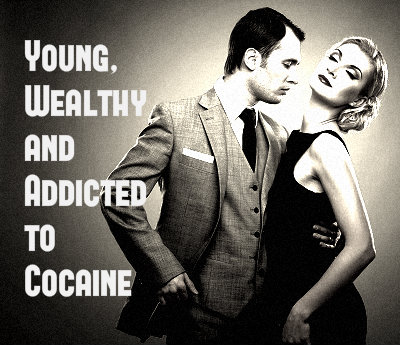 She scrambles around first in her Lanvin tote and then in the Louis Vuitton at her feet—there it is. She comes up with a small baggie of white powder and dumps a mound of it onto a compact mirror. Her father’s jet hasn’t left the tarmac, but Charlotte is already flying.
She scrambles around first in her Lanvin tote and then in the Louis Vuitton at her feet—there it is. She comes up with a small baggie of white powder and dumps a mound of it onto a compact mirror. Her father’s jet hasn’t left the tarmac, but Charlotte is already flying.
The entire winter has been as buzzy and unfocused as she is now. Night after night after night—turning into stretches of days—the young socialite smokes heady French cigarettes, drinks bottles and bottles of champagne and snorts the white powder with growing regularity. Interspersed are the nights spent on “molly”—or MDMA—and once or twice trying a drug she didn’t know until afterward was angel dust, or PCP.
It’s snowing all the time, whether it’s snowing or not. The heiress has a dull headache in the front of her skull that won’t go away and her normally waspy body is down several pounds. The Stella McCartney pantsuit she’s wearing fit her so much better only two weeks ago when she bought it in London. She’s waifish in the way her class and gender are expected to be, but far more so; she is deadly thin. Still, as Charlotte puffs on the cigarette, her teeth gleam in a grin as she exhales; she feels gorgeous, brilliant as a diamond.
But her father’s assistant sits stricken. Charlotte’s nose is dripping blood onto that winter white suit. This is the first time the woman has seen her employer’s daughter look so ungodly ill—there are dark circles under her eyes; her face is gaunt and dull despite the bright coral Dior lipstick. When did the girl take up smoking? As she reaches for a bottle of tonic water to daub the stain, she notices the baggie. The two women meet eyes; both know this will be a very long flight.
Crack Cocaine – An Equal Opportunity Destroyer
When you think about crack cocaine addiction, young women and men lost to the illusions painted by the dangerous highs of angel dust, stuttering speech and the smear of mascara, you probably think of the inner city. Young people with hopeless futures and no way out; little money and nowhere to go with whatever potential they might possess. But this tableau is just as common among the prep school lot of the Upper East Side. Wealth and power know the pain of addiction as well as any other class. Picture the celebrity heiress, falling from grace on the cover of Page Six. She could go anywhere, have anything—why does it happen?
Sigrid Rausing, Swedish philanthropist, anthropologist and publisher put it aptly: “The pros of inheriting great wealth, I believe, are largely illusory and can become pathological. An illusory sense of being special and different, the assumption that one is interesting to other people only, or mainly, because of the money, and subsequent feelings of isolation.”
Isolation. For those outside the 1 percent, it can be hard to imagine how the proverbial keys to the kingdom might lead one to a sense of alienation, but imagine: you have everything in the world, everything many others would take from you in a heartbeat; you can never be entirely certain whether those who remain close to you do so for the privilege your prestige brings or whether you truly matter to them; and a great portion of the world is hoping you will fail. You have no need to work, no need of avocation except as hobby. A 20,000 square foot beach house in the Hamptons, a penthouse apartment in Manhattan, and half the island of Barbados may be yours, but what of meaning? Purpose? Those things must be created by each of us; they are never inherited.
According to William F. Messinger, “More than just a distraction, addiction fosters complex dysfunction that affects families on multiple levels: from the rampant financial drain to support the addict’s habit to the exhausting tension and family conflicts to the public relations nightmares of outbursts and arrests. It’s a problem that can threaten the very underpinnings of the family’s wealth and security.” While no one elects at the outset to become riddled with the problem of chronic addiction in order to advance the demise of his or her life or that of the family name, families would do well to consider the problem of addiction as serious as diabetes or cancer, and as likely to advance if not taken seriously.
Recovery Is No Easier, No Matter Who You Are
And therein lies the rub. While the very wealthy may be able to afford the finest recovery centers, the best doctors and the most up-to-date, ongoing care for their addicted loved ones, the problem of addiction reaches into the very depths of who we are as people, and is a battle which must be fought daily. No outside help can do the fighting for you. A middle-class individual may feel more able to walk into an AA or NA meeting and trust the anonymity inherent in the group’s mission. She can largely trust that others will be in the meeting with lives and problems much the same as hers, but when you come from the very highest echelon along the social class structure, you may fear showing up at all for fear of making too vulnerable your family’s name or security. This is not stated as a reason to feel sorry for the wealthy; it is simply a fact. No matter who we are, or what we have, if we deal with the problem of addiction, we must suffer its consequences.
Money and status can buy many things. Unfortunately, they cannot secure a life free from the stranglehold of addiction, or entirely clear the devastation wrought after addiction has taken its hold. They can, however, if a person is willing to invest the time and interest, provide a life where making oneself well is at least financially possible, and where creating purpose and meaning can be carved out should one choose. It is the purpose and meaning part, after all, which will carry us through into recovery, no matter who we are.


